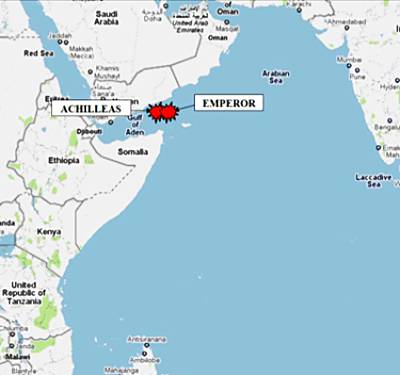Up-to-the-minute lessons being brought back from southern Afghanistan’s front lines are redefining marksmanship within the Army; changes brought into sharp focus during the 2010 Central Skill-at-Arms Meeting. Report by Stephen Tyler.
 |
| Soldiers at the CENTSAM now have to shoot from several positions, including crouching Source: Graeme Main, Ministry of Defence, UK Click to enlarge |
For sharp-eyed marksmen serving in Britain’s Armed Forces there is no greater proving ground than the ranges at Bisley and neighbouring Pirbright.
The Surrey facilities have hosted generations of soldiers keen to show off their shooting prowess by dropping to their belt buckles and patiently delivering ultra-accurate shots into targets hundreds of metres away.
But while the sharpshooting set’s actions retain a place in the centres’ folklore, their contemporaries need to display an increasingly different set of skills to earn entry into the crack-shot elite.
The annual event for the best Service shooters, the Central Skill-at- Arms Meeting (CENTSAM), is shunning its old-school static serials in favour of action-packed, quickfire versions inspired by the battle-winning techniques being used on Op HERRICK.
Major ‘Clem’ Clemson, an incoming member of the Operational Shooting Training Team based at the Army Rifle Association’s (ARA’s) headquarters at Bisley, is continuing a drive to use the latest feedback from theatre to make small arms tuition and competitions as relevant as possible:
“Operational experience is driving everything we do,” he explained. “I don’t think the standard of shooting in the Army has slipped, but where we struggle is in finding the time to do the live-firing training.
“It’s important that we do find the time because marksmanship will only get more essential in the future.
“To use a golfing analogy, Tiger Woods is the best player in the world because he practises, but he put his clubs down for a couple of months and was nowhere near that level when he came back.”
Examples of the CENTSAM’s transition into the here and now were not hard to come by at the Army Operational Shooting Competition (AOSC). Where historically contestants would lie down in the prone position before taking their time to zero in on distant targets, the AOSC adopts a much more physical approach.
Several individual contests now require soldiers to fire from kneeling and standing positions to mimic the situations they will encounter in Helmand province.
The long-established Parachute Regiment Cup has been tweaked to make it operationally-relevant. Teams now have to complete a casevac (casualty evacuation) with a 75kg dummy over 300 metres and carry ammunition tins along the range during the frantic move-and-fire shoot.
The claustrophobic nature of the modern battlefield has also been taken into account with the introduction of a close quarters marksmanship (CQM) match.
The discipline tasks personnel with advancing to combat along a 100-metre range, switching from rifle to pistol for the final sections to simulate what they would have to do if their weapon malfunctioned. And new targets have been introduced to help train soldiers to improve their aim.
Major Peter Cottrell, of The Princess of Wales’s Royal Regiment, is the Army’s Chief Instructor of Operational Shooting and Marksmanship:
“This is very intense — you have rushed magazine changes, the transition from rifle to pistol and so on. The methods we use are designed to give soldiers a real test,” he said.
“You can’t just lie down on the ground waiting for a target to pop up anymore because that is just not realistic.
“The idea with the new targets is to hit a central area of mass. They are smaller and so are the scoring areas, so we are putting a lot of pressure on people to hit them.”
After grappling with the new targets, personnel progressed on to the second half of the CQM match which challenged them to advance onto a series of moving objects and engage them from both standing and kneeling positions.
Range officer Warrant Officer Class 2 Jason Adewole of the Small Arms School Corps (SASC) said that the updated set-up tests soldiers’ ability to adopt different stances and carry out their drills with minimal command:
“The guys are honing their skills and working on their accuracy. Once they have that they can take it into theatre and the rest should fall into place,” he said.
“The targets move and the guys need to be able to bring on the skills they have already got and engage them using the methods they have been taught.
“We need them hitting those targets with the minimal amount of rounds.”
While the CENTSAM is the jewel in the ARA’s crown, the Operational Shooting Training Team’s workload does not drop off outside the competition period.
Members of the team regularly travel to different units to provide train-the-trainer packages in the latest techniques.
Warrant Officer Class 1 Lee Jenkins (SASC) visits brigades to deliver expert coaching ahead of their deployment to theatre and the senior soldier hoped that his sessions, combined with refreshed contests like the AOSC at the CENTSAM, are making the art of shooting enjoyable:
“The guys see the things like the transition between weapons and it rekindles the love for shooting,” he said.
“Getting people’s interest back is important and I think we are making inroads into getting back to basics and really concentrating on making soldiers better at shooting.”
Competition to become a member of the Army 100 — the Service’s top shots each year — or even claim the Queen’s Medal for being the best of the best remains as high as ever at the CENTSAM. But long-distance accuracy is only half of the story. Those firing in anger in Afghanistan require physical robustness, mental agility and absolute mastery of their weapons and the dedicated members of the Operational Shooting Training Team are ensuring that those vital skills are honed to perfection.
This report by Stephen Tyler was first published in the August 2010 issue of Soldier — magazine of the British Army.
Press release
Ministry of Defence, UK

 von
von 